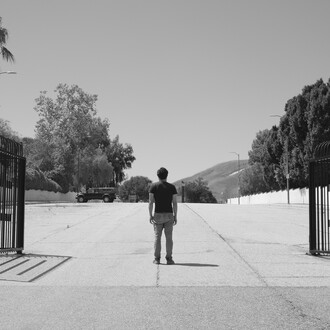Count Franz von Larisch-Moennich willingly embraced immense risks in his hunt for the most powerful wave: He criss-crossed the oceans on what were the fastest sail boats of his age, the Flying-P liners built by Laeisz.
The captivating photographs that Count Larisch brought back from his travels established the foundation for scientific research of waves in the early 20th century.
The special exhibition is showing for the first time a selection of maritime photographs by Count Larisch from the collection of the Historical Archive. The photographer himself annotated the rear of most original shots, adding comments about the location, wind strength and height of the waves. They were taken between 1909 and 1914 during his voyages across the Atlantic, Pacific and Indian Oceans.
Moving images are also included in the exhibition to complement the stills. The short documentary "Ein Sturmfahrt ums Kap Hoorn" (Rounding the Horn in Stormy Weather) was produced by Ufa in 1930 using the extensive film material that Count Larisch shot of his trips round Cape Horn between 1927 and 1930. Most recently shown in German cinemas as a short in 1937, the film will now be introduced to a wider audience.
Count Franz von Larisch-Moennich was born in Schönstein Castle, Silesia, in 1878. He pursued his interest in photographing the seas at an early age and began a systematic study and research of the different types of waves under varying wind circumstances.
Count Larisch made contact with the Institute and Museum for Oceanography in Berlin in 1908. The idea of creating a "wave atlas" was born. He embarked on his first longer journey the same year, rounding Cape Horn on the sailing ship POSEN. Employed as a correspondent at the Institute for Oceanography, he set off for Australia in 1926, travelling on board a steamer, the AACHEN. During the trip, he completed first experiments with his film camera, a Zeiss-Ikon-Kinamo.
Count Larisch retired to Lake Tegernsee in Bavaria after his final voyage in 1930. He passed away there on 1 November 1937.
The photographs by Count Larisch-Moennich had belonged to the new museum department "Ocean Waves" at the Institute and Museum for Oceanography in Berlin since March 1932. The collections and archives were forgotten when the museum, destroyed during the War, was disbanded. Since the 1990s, the German Museum of Technology has attempted to bring the collections back together and make them accessible. The Larisch collection in the Historical Archive of the German Museum of Technology Foundation Berlin now comprises 131 photographies and photographic prints.
















